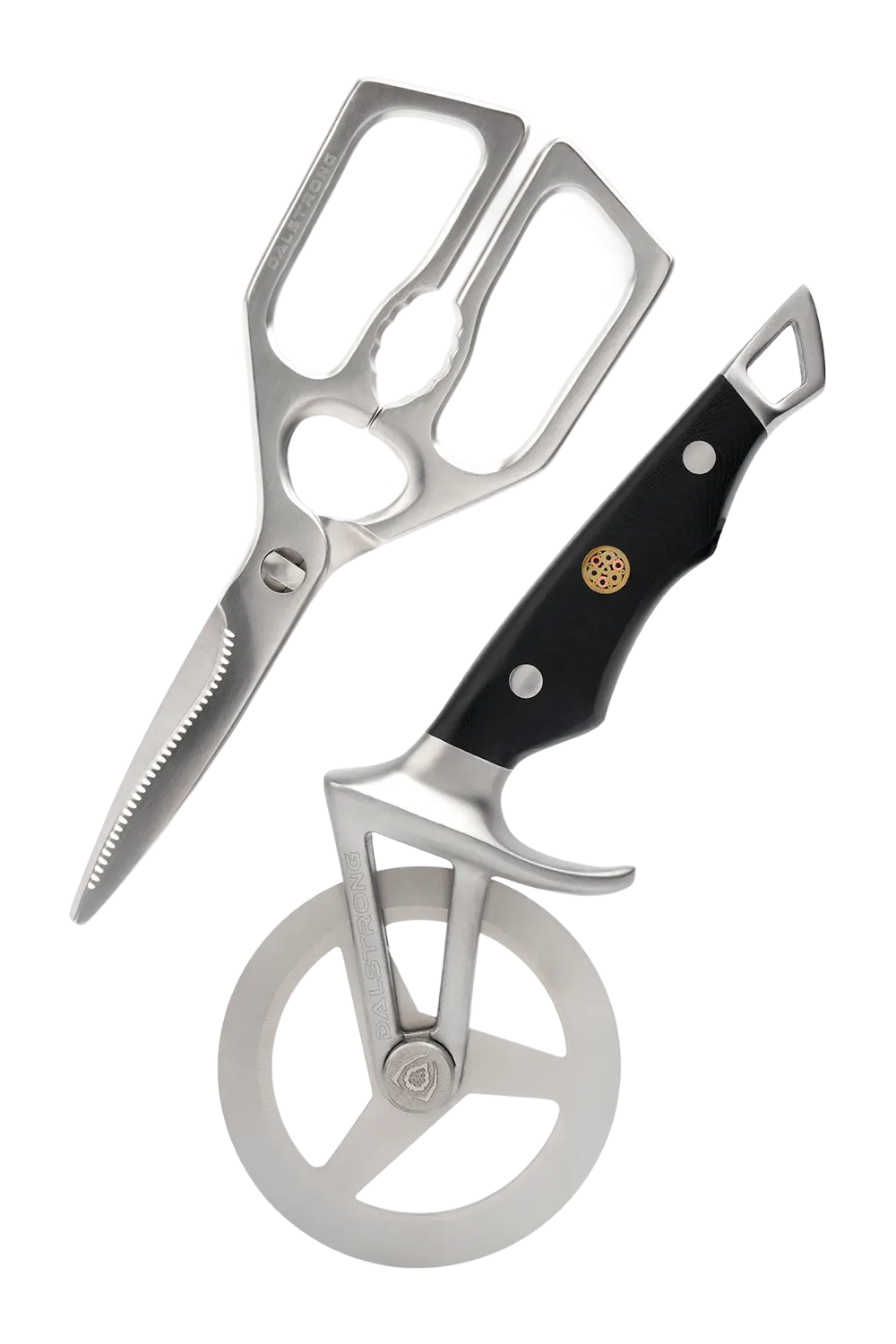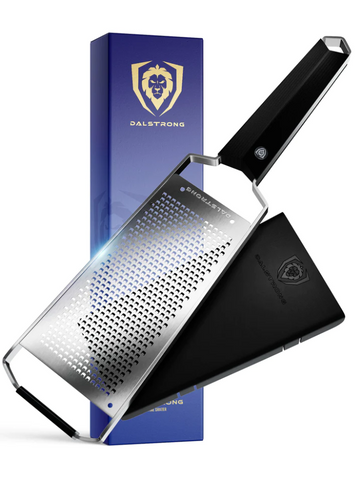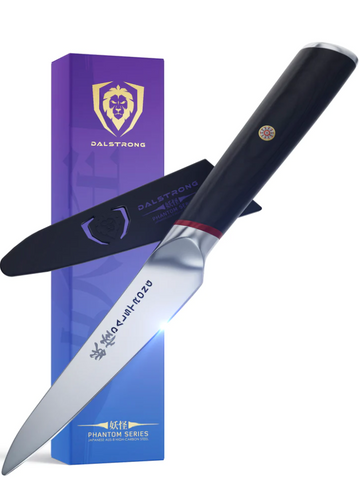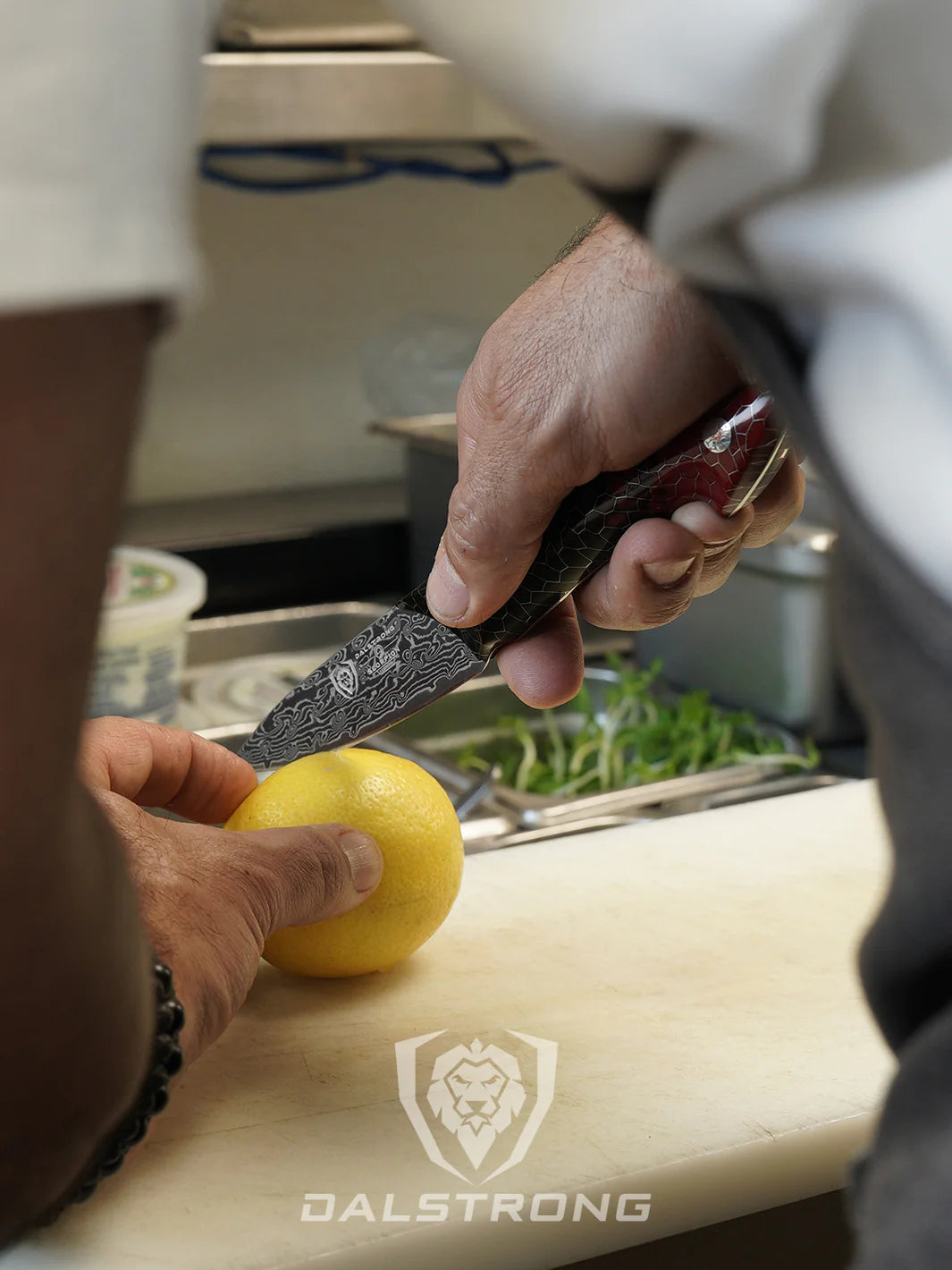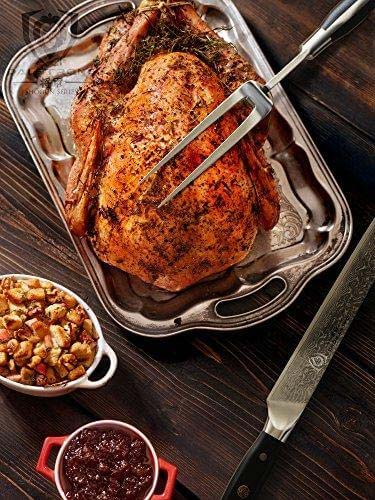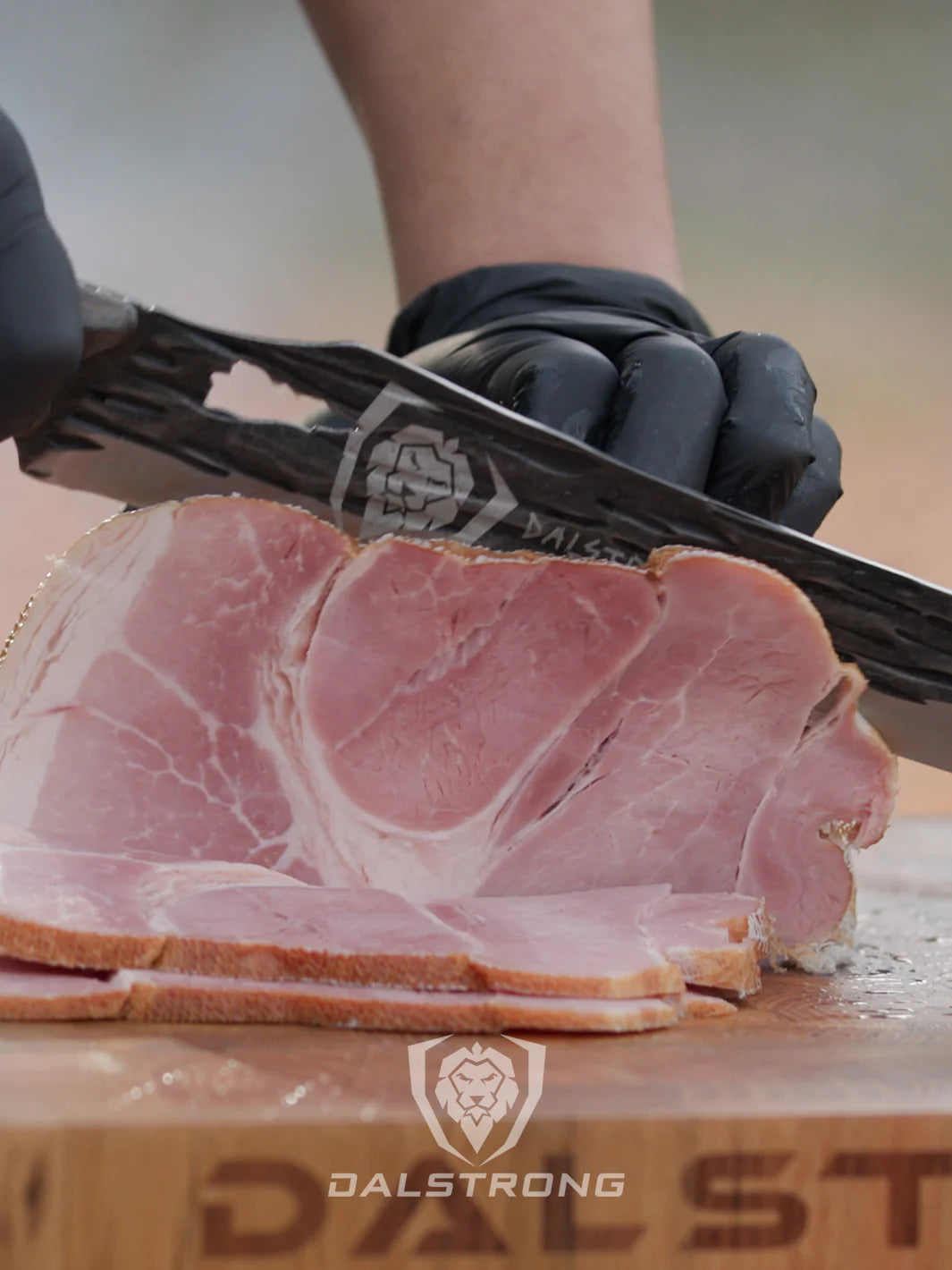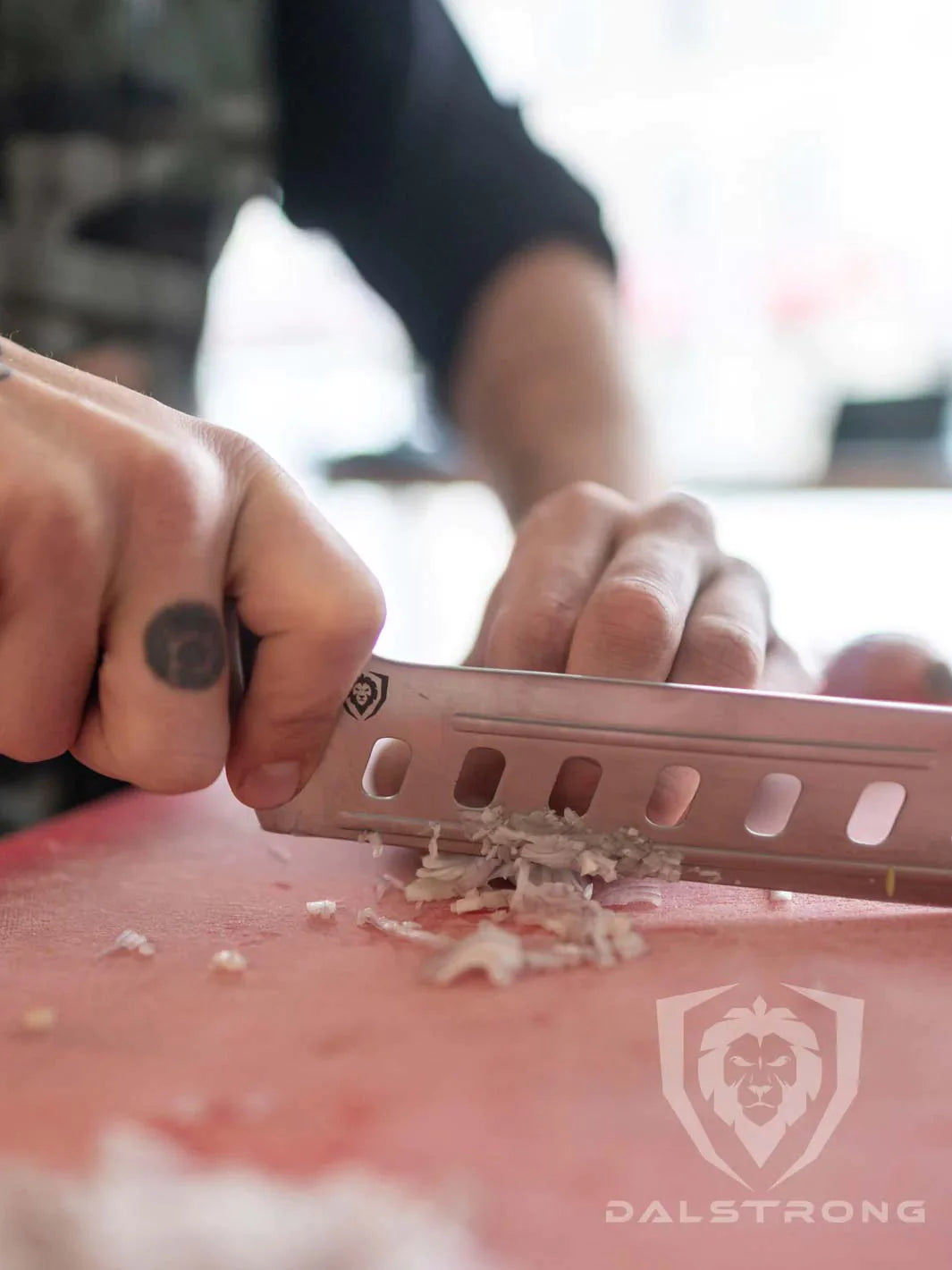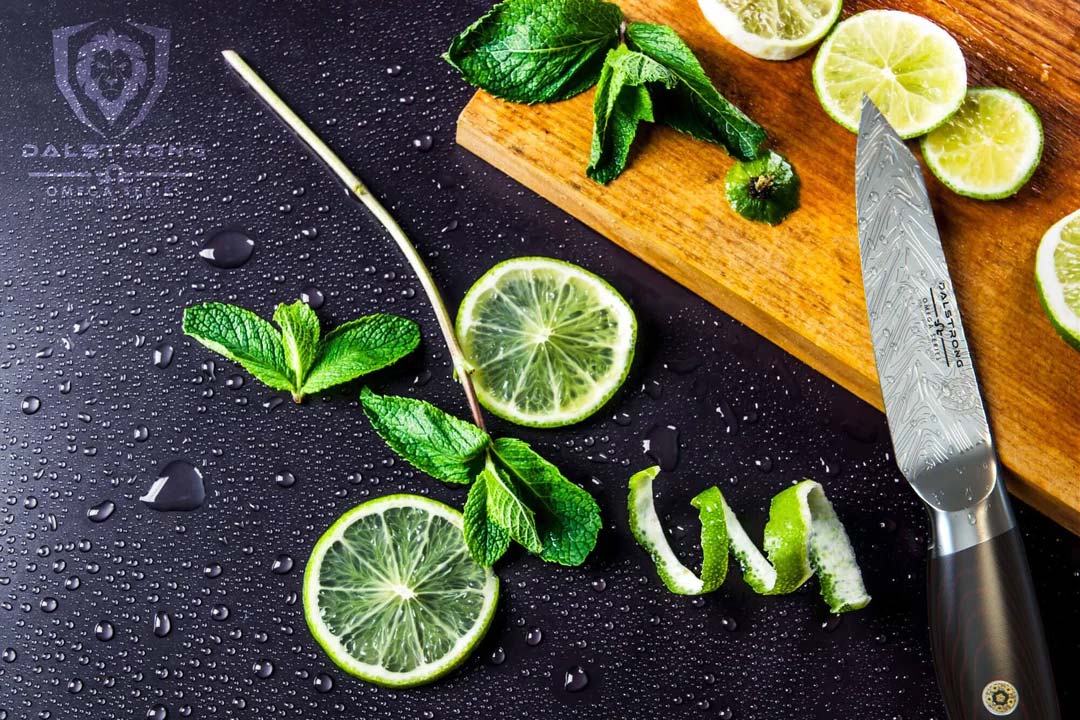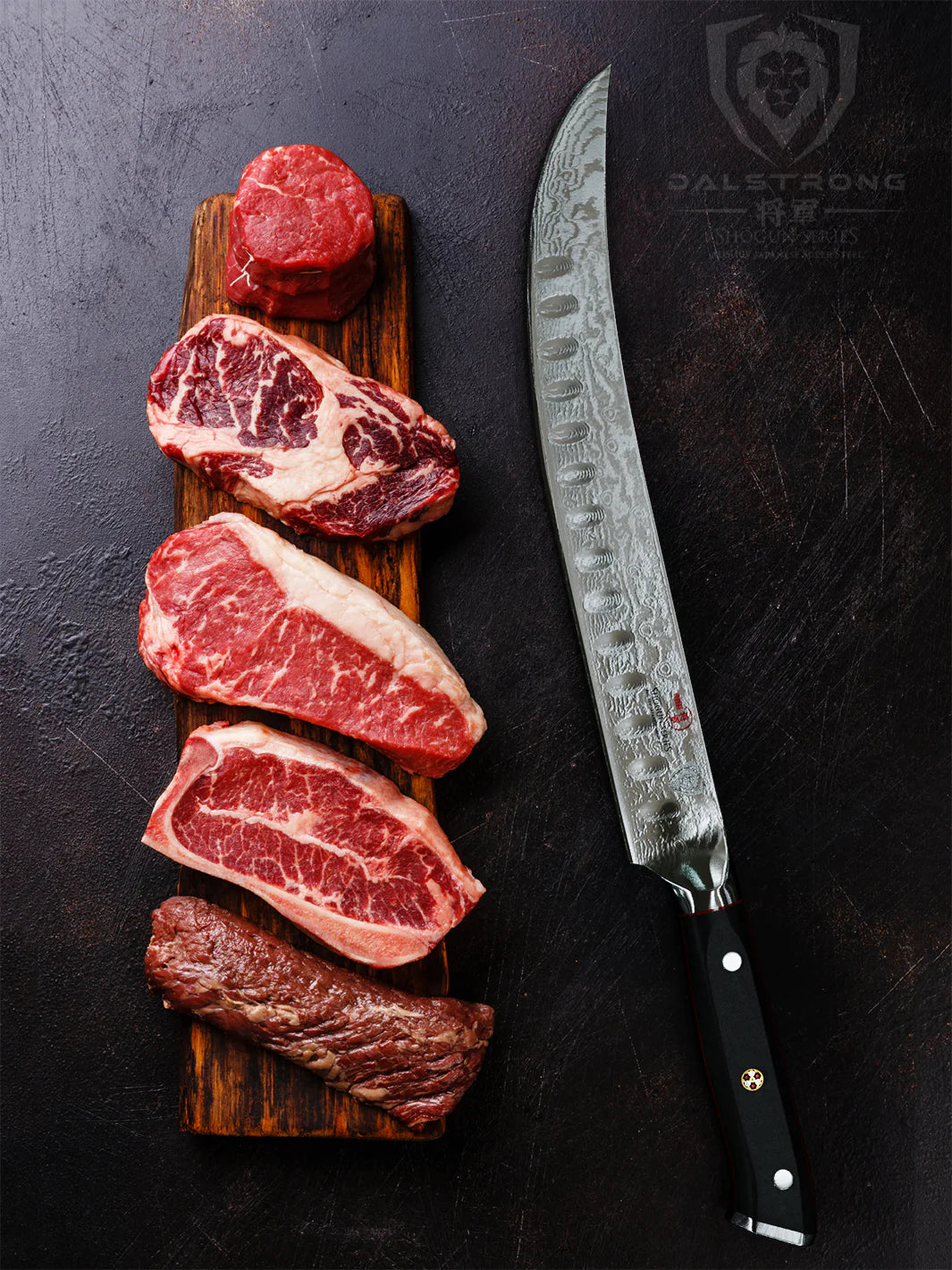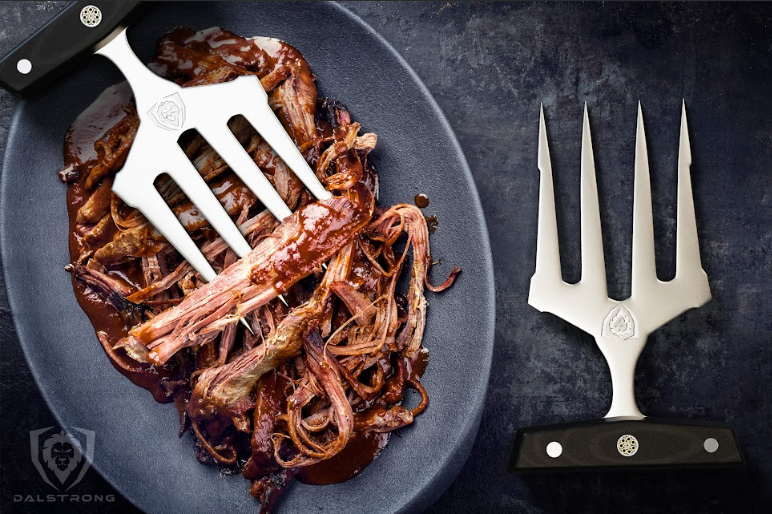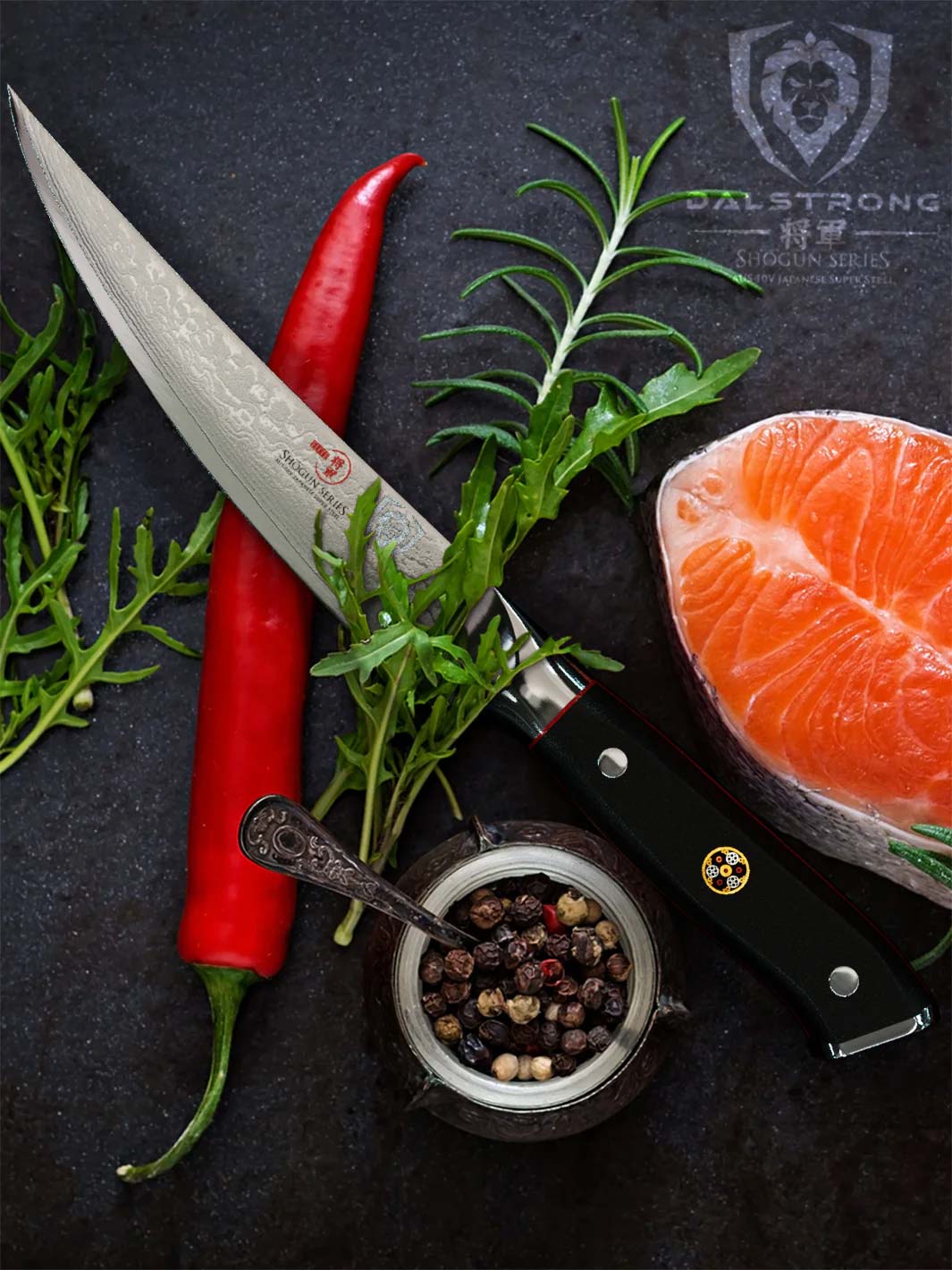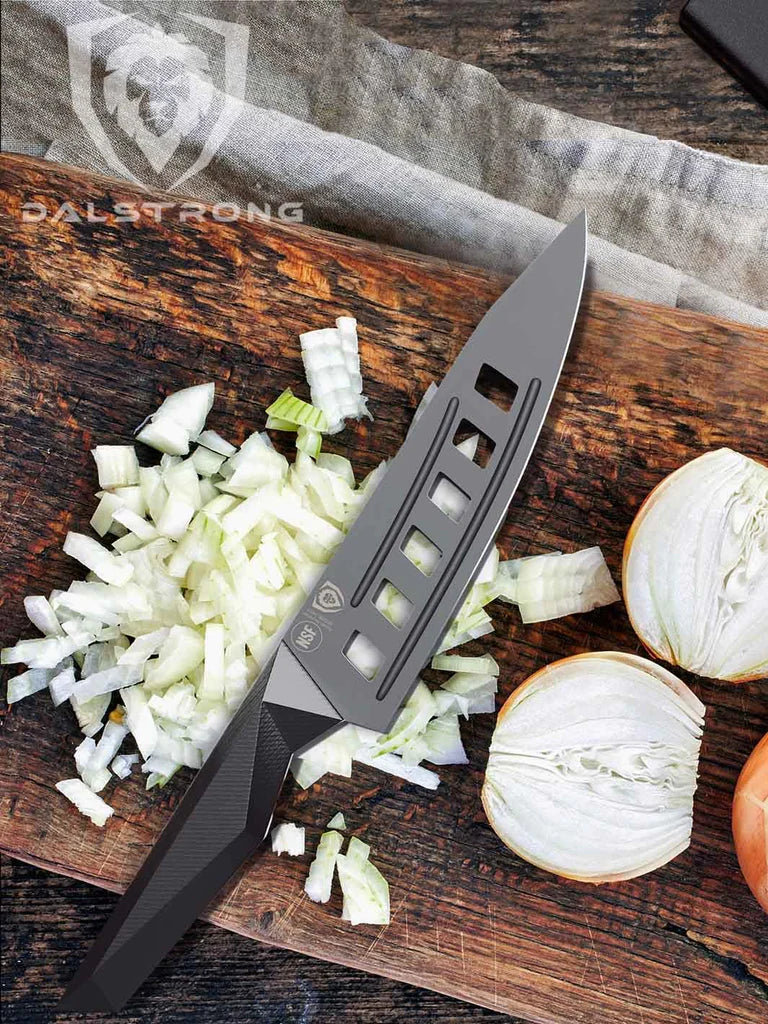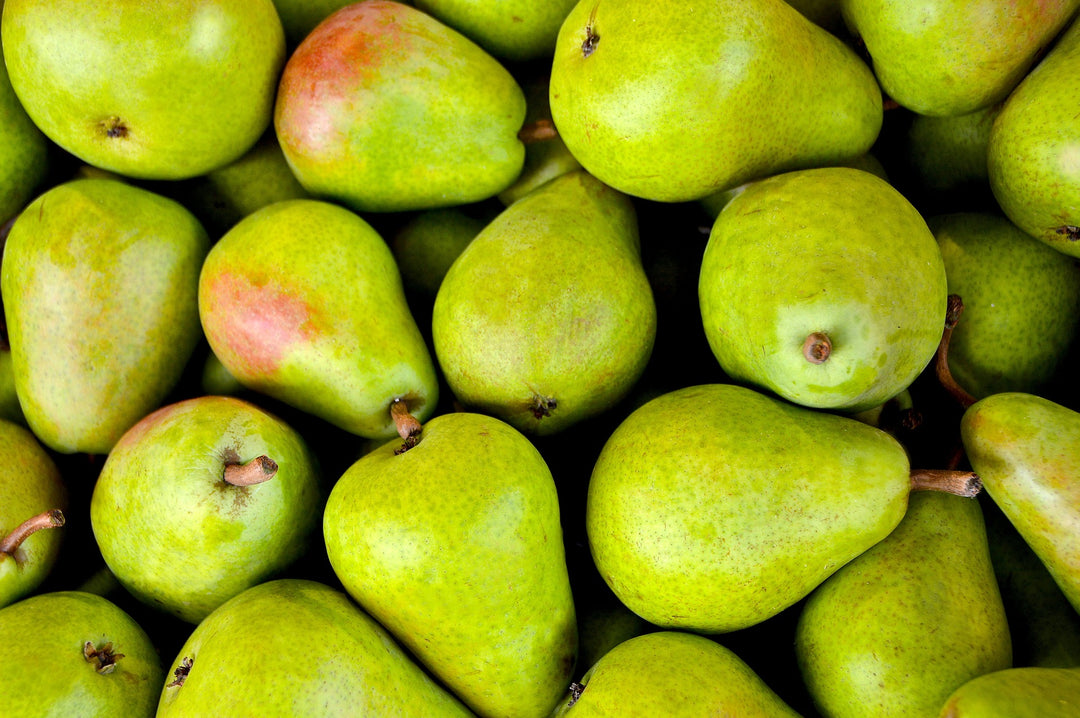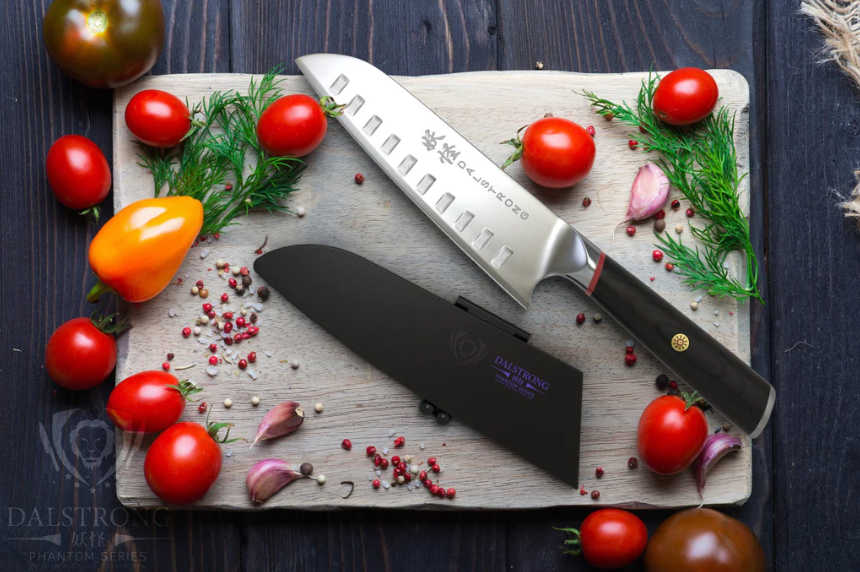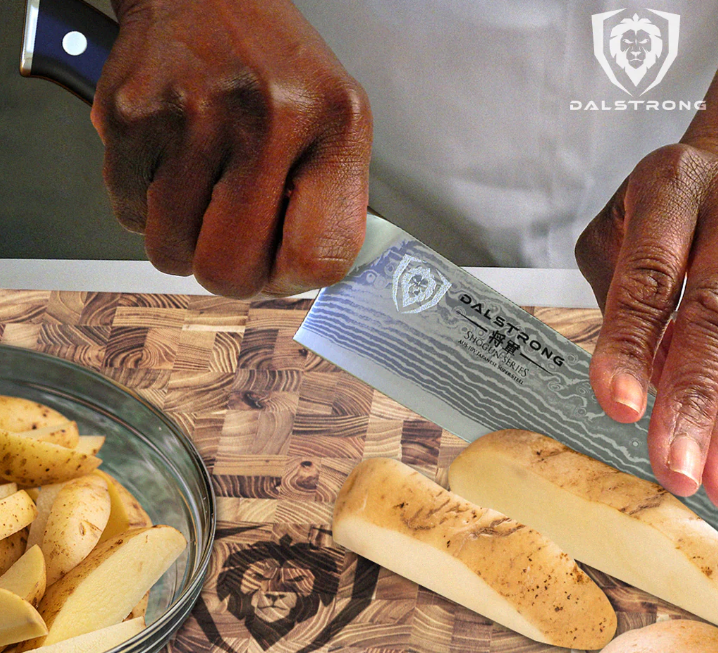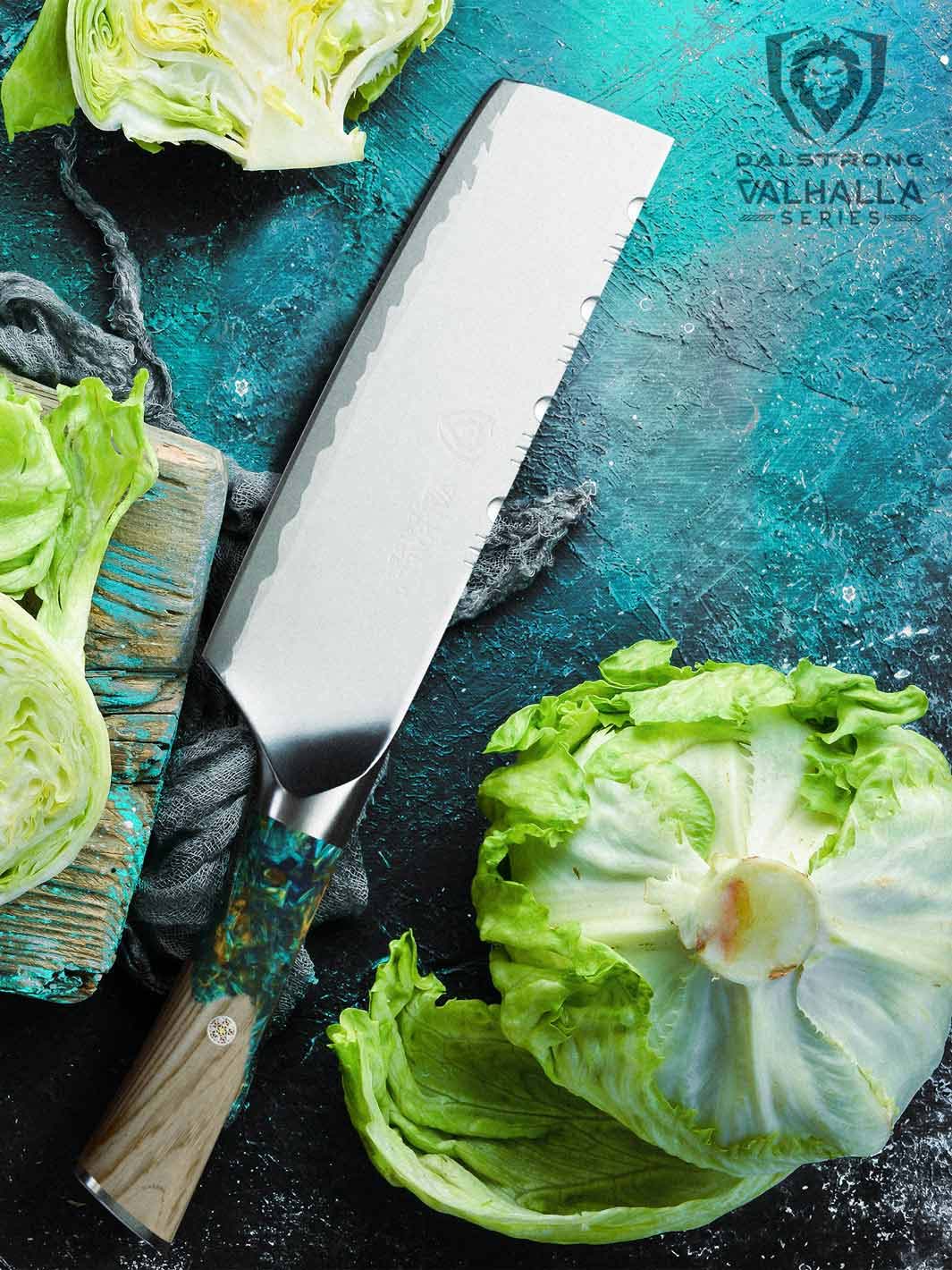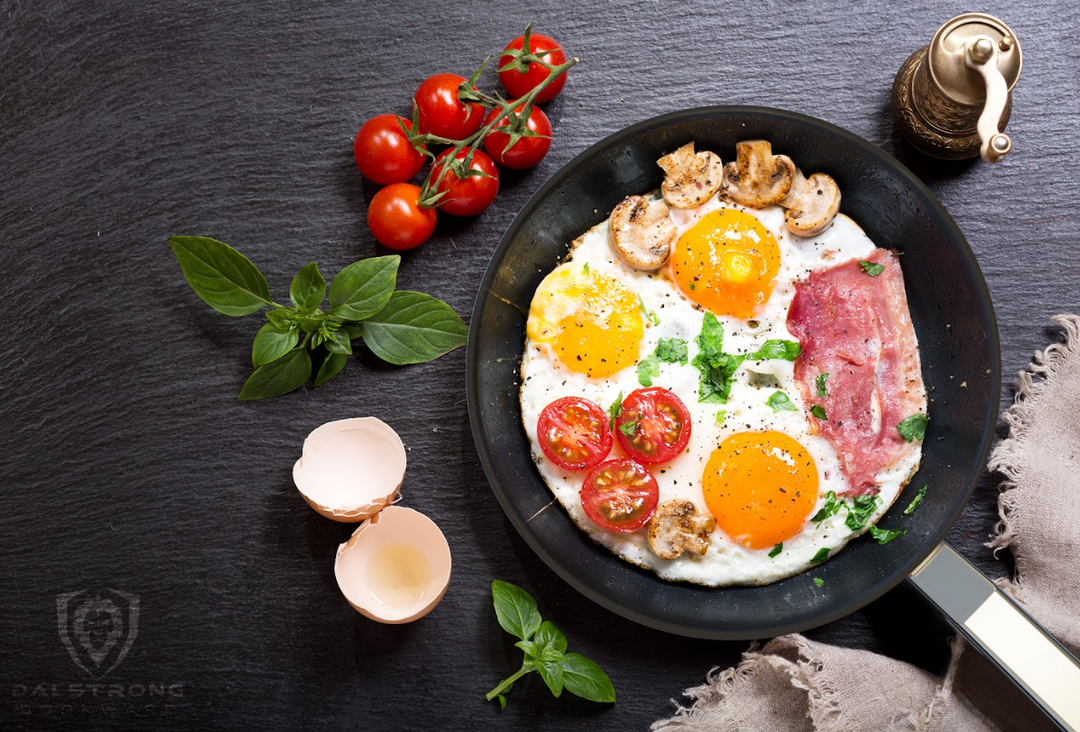How To Grate Ginger The Easiest Way Without Making A Mess
 Professional Coarse Wide Cheese Grater Dalstrong
Professional Coarse Wide Cheese Grater Dalstrong
Quick Overview: How To Grate Ginger
- Peel and cut the ginger into halves before placing it over the grater as this gives you a better grip on the roots.
- Place the ginger roots over your grater at a vertical angle.
- Gently swipe and glide the ginger from one end to the other in a downward motion.
- Tend to the ginger knobs gently as these are the uneven and round parts of ginger.
1. What Is Ginger And Its Health Benefits?
Ginger comes from a flowering plant in Southeast Asia and is one of the most nutritious and healthiest spices used in daily cooking. Ginger truly is a versatile spice that can be used to make desserts, beverages, and savory meals.
A knob of ginger can be used to make a ginger paste for plenty of easy air fryer and instant pot recipes such as soups, marinades, and sauces.
Read about on how to store ginger so it stays potent, here.
Health Benefits Of Ginger
In Asia, ginger is used for medicinal purposes, too. A single knob of ginger can be used to make juice or oil along with ginger powders.
It can be used to treat indigestion and nausea, and as a health shot in the morning to keep cold, cough, and other flu-like symptoms away. You can store peeled ginger in an airtight container.
Freezing ginger is perfectly fine, too. Frozen ginger has the same nutritional value as fresh ginger. You can use this to make a ginger paste, as well.
The natural oil present in ginger roots is called gingerol. This is the medicinal element present in ginger and is known for its anti-inflammatory effects and is rich in antioxidants. Consuming ginger in small amounts each day can reduce stress, as well.
Chewing stored fresh ginger when tackling morning sickness is an instant remedy, and I can personally vouch for that, folks. It instantly reduces nausea symptoms.
2. How To Grate Ginger
There are a couple of tricks to grate ginger. If you prefer using knives, that’s fine, too. I’ll be walking you through both methods and you can choose what works for you.
A sharp knife, such as a chef knife, can help achieve matchsticks julienne-like ginger which is perfect for garnishing foods.
And, don’t worry home cooks, you don’t need to attend cooking school to master the art of grating ginger – Dalstrong tools can get the job done.
How To Peel And Grate Ginger
Steps
- Use a vegetable peeler, paring knife, or potato peeler to get a peeled and clean ginger plate.
- Peel and cut the ginger roots into chunks to get a comfortable grip on them.
- For any excess ginger stuck on the skin, hold the ginger against a spoon, and the spoon to your skin. Then, gently pull. The ginger roots and skin should now be separate.
- Use the same method to remove the grain of the fibers.
- Hold the ginger vertically over your grater. If you’re using a boxed grater, tilt the grate vertically instead.
- Angle the ginger roots in a downward motion and apply gentle pressure.
- Then, grate the ginger knobs very slowly as this is a delicate part of the root.
- Scrape the ginger pieces from underneath your boxed grater or micro plane grater.
Cooking Tips:
- If the ginger root is soft and tender, consider freezing ginger for 15-20 minutes. Then, dunk it in warm water to get it to room temperature.
- Use a narrow or coarse grater and clean it well with a thick cloth to remove any dust particles.
How To Julienne Ginger Roots
Ginger tastes great, whether you peel slice julienne chop mince or grate it. But, if you eat with your eyes first, texture matters. So, here’s how you can julienne-cut ginger for a hearty meal.
Steps
- Place the ginger on a sturdy cutting board and use a paring knife or vegetable peeler to remove the skin.
- Once you’ve peeled the ginger, use a sharp knife, such as a chef knife, to cut the roots into little chunks at a horizontal angle.
- Then, cut it lengthwise, ideally an inch thick.
- Gather the pieces together and cut them into thin strips, ideally less than half an inch thick.
How To Mince Ginger
If you want to mince or grate ginger, a narrow or micro-plane grater is ideal. The tiny holes on the surface of these grates give you the perfect consistency and texture.
Steps
- Peel the roots with a paring knife, vegetable peeler, or a spoon.
- Use a narrow or micro-plane grater and place your ginger on top of it at a vertical angle.
- If you don’t have a grater, use a large chef’s knife to slice the roots into thin and precise cuts.
- Lastly, chop up the ginger in the opposite direction and you should have chopped minced ginger.
- Since minced ginger tends to dry up faster, wrap it in some plastic wrap and store it in an airtight container.
3. Recommended Dalstrong Graters
1. Professional Extra Coarse Wide Cheese Grater Dalstrong
This professional grater is the finest tool that can elevate your grating experience ten folds. Whether you need to grate, mince, or zest ginger, the anti-slip G10 handle will make your life easy, thanks to the comfortable and ergonomic grip it offers.
PROS:
- Made with 304 stainless steel for all the durability that you need.
- This grater can tolerate high temperatures and is dishwasher-safe.
- The extra coarse teeth are perfect for other fruits, spices, and vegetables.
CONS:
- If you prefer narrow, tiny teeth on your grater, Dalstrong’s graters with narrow holes would be a better fit.
- If you’re someone that’s not big on garnishes, a grater might seem a smidge overkill.
2. Professional Zester Narrow Grater Dalstrong
This narrow grater is all you need for chocolate shavings, nutmeg and cinnamon peels, and your sauces and marinades that need a little extra flavor of ginger and garlic. Equipped with a protective sheath to keep you and your grater safe.
PROS:
- This grater can withstand the harshest spices and tolerate extreme temperatures, making it dishwasher-safe, too.
- The G10 handle is tough and sturdy, but just enough to hold it for a stupendous grip as you zest away.
- The slim and narrow design of this grater helps you save space in the kitchen, especially if you too, like me, have a compact kitchen space.
CONS:
- The tiny holes on the surface of this grater may be too small for folks that do more than mince, zest, and grate foods.
- The slim and angled design of this grater might not be everyone’s cup of tea.
3. Professional Fine Wide Cheese Grater Dalstrong
Made with 304 stainless steel for all the resistance your grater needs from corrosions, acids, and other food elements. This grater has fine wide teeth for ginger, garlic, and other garnishes you need with vegetables like carrots and shallots.
PROS:
- The G10 handle is made with highly impervious fiberglass resin that is heat, acid, and moisture-resistant, boosting the durability of your grater.
- Zest and grate away without worrying about the blades catching rust and other dirt particles.
- The handle is anti-slip and textured for ergonomic support.
CONS:
- If you’re not big on grating or zesting foods, a grater might seem slightly overkilling.
- You may prefer a different blade design than the one on this fine-wide grater.
4. Paring Knife 4" Phantom Series
This paring knife from the Phantom series is one to look out for. Made with premium quality Japanese AUS-8 steel that is hardened at 58+ Rockwell for an easy peeling and slicing process for ginger, garlic, carrots, and other vegetables. The handle on this knife is made with Pakkawood which is imported directly from Spain.
PROS:
- A ruthlessly sharp blade with a mirror polish that is angled at a staggering 13-15 degrees.
- Tapered blade for dexterity and durability.
- This paring knife is low in maintenance and cleans quite easily.
- The sanitary build of this knife makes it perfect for busy kitchens.
CONS:
- If you’re looking for a paring knife set, an individual knife like this might not do justice to your culinary needs.
- If you prefer using vegetable peelers/potato peelers, a paring knife might not be the perfect fit. But, this versatile knife can be used for your other culinary needs.
This Y peeler is perfect for peeling through fresh ginger roots. The locking system on the blade is all you need for a safe peeling process. Whether it’s garnishing or crafting shavings of nutmeg or lemon zest, this peeler can do it all.
PROS:
- The blades are perfect for both, left and right-handed cooks.
- The blades on this peeler are stain-resistant.
- The G10 handle is designed for wet environments, so it’s perfect for both, home cooks, and seasoned chefs.
CONS:
- If you prefer using paring knives, this Y peeler might not be used till its best potential.
- You may prefer swivel peelers over Y peelers.
6. Chef's Knife 10.25" Shogun Series X
The precision on this chef’s knife is exceptional, to say the least. Made with Japanese AUS-10V super steel cutting core for a robust chopping experience. The blade is made with 66 layers of high-carbon stainless steel and is resistant to stains.
PROS:
- The blade has a mirror-like polish for all the balance you need.
- Nitrogen-cooled blade for phenomenal dexterity and resistance to corrosion.
- Superior blade length if you mince or grate gingers, garlic, and shallots regularly.
CONS:
- If you’re a home cook just stepping into the culinary world, the length of this knife might seem a smidge intimidating.
- For folks who have a set budget for kitchenware, this knife may be priced on the higher end.
4. Frequently Asked Questions
Do you grate ginger with the skin on?
While ginger skin is edible, most folks leave the skin out. This is completely up to you.
Should ginger be peeled before grating?
You can peel ginger skin off if that’s how you like it. In some parts of the world, ginger is eaten with the skin on. But, if you want to make a ginger paste, peeling the skin would be ideal.
How do you prepare fresh ginger to grate?
If you’re using frozen ginger, dunk it in warm water for a couple of minutes. If you want to grate ginger, always use the roots that are at room temperature.
Should I chop or grate ginger?
If you want to cook food with ginger as a spice, it’s best to chop. If you want to make a ginger paste or use it as a garnish, grating it is the way to go.
Which side of grater to use for ginger?
For ginger, it's best to use the fine side of a grater. This side, often called the fine or small grater, produces tiny, uniform shreds of ginger that easily blend into recipes. It's ideal for adding ginger flavor without any fibrous or chunky texture. This side of the grater is especially useful for dishes where a subtle ginger taste is desired.
How do you grate garlic and ginger?
To grate garlic, peel a clove, then rub it against a fine grater's surface or use a microplane. For ginger, peel the skin and use the smaller side of the grater. Hold the grater at a slight angle and rub the ginger across it, applying gentle pressure. Collect the grated pieces from the grater's underside.






















































































































